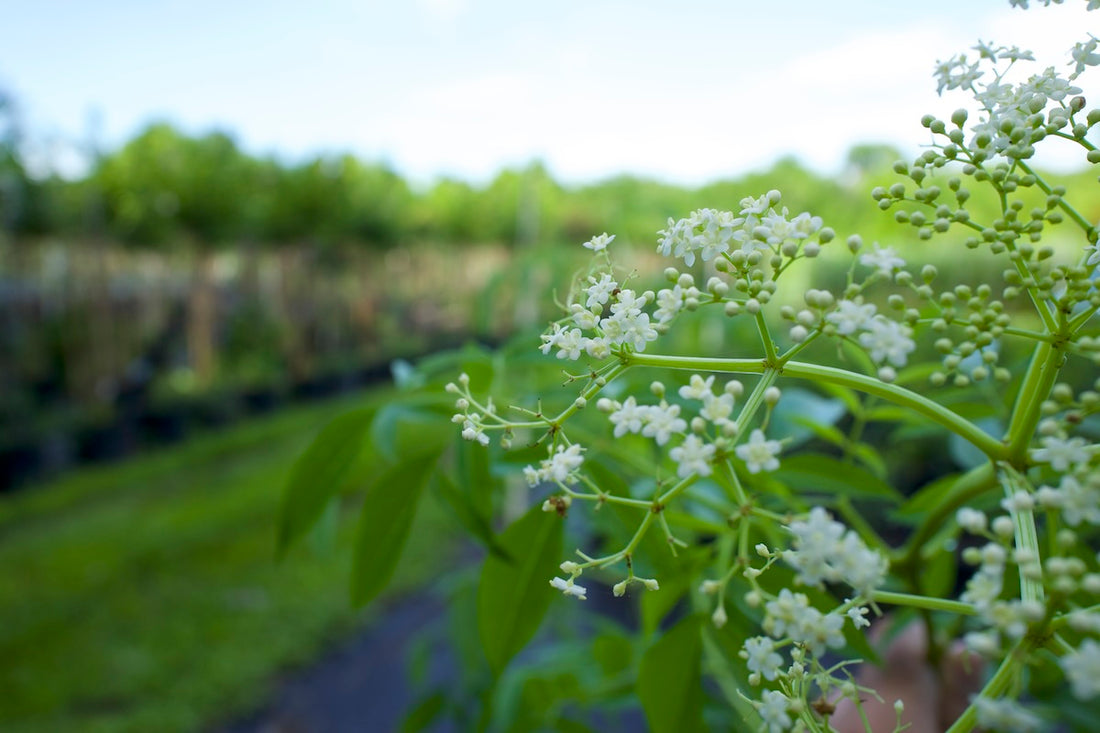
Thriving Food Forest in Florida: A Guide to Selecting the Right Plants
Share
Building a food forest is a sustainable way to mimic the natural ecosystem while growing a diverse array of plants that provide food, medicine, and habitat for wildlife. Florida, with its unique climate and soil conditions, is ideal for cultivating a food forest that thrives year-round. Let's explore some of the best plants for a Florida food forest, ranging from fruiting trees to native plants that support local wildlife.
Understanding the Layers of a Food Forest
A food forest consists of multiple layers that work together to create a balanced ecosystem. Each layer plays a vital role, from tall canopy trees to ground covers, and each layer has its unique benefits:
- Canopy Layer: Tall, fruiting, and nut-bearing trees.
- Understory Layer: Smaller fruit trees and shrubs.
- Shrub Layer: Berry bushes and other shrubs that provide food and habitat.
- Herbaceous Layer: Herbs and non-woody perennials.
- Ground Cover Layer: Plants that protect and enrich the soil.
- Vine Layer: Climbing plants that use vertical space efficiently.
- Root Layer: Plants with edible roots or tubers.
Key Plants for Your Florida Food Forest
1. Canopy Trees
Canopy trees form the uppermost layer of the food forest, providing shade, fruit, and shelter. In Florida, a combination of native and fruit-bearing trees is ideal.
- Live Oak (Quercus virginiana): A staple in Florida landscapes, this majestic oak provides shade, wildlife habitat, and acorns that support local fauna.
- Nuttall Oak (Quercus nuttallii): A fast-growing oak that provides excellent wildlife benefits, such as food and shelter.
- Bald Cypress (Taxodium distichum): A native tree that thrives in wet conditions, creating a lush, green canopy and providing a habitat for various bird species.
2. Fruit Trees and Nut Trees
Fruit and nut trees are the backbone of a food forest, providing a reliable food source for both humans and wildlife.
- Mulberry (Morus rubra): A fast-growing, drought-tolerant tree producing sweet berries that attract birds and other wildlife.
- Persimmon (Diospyros virginiana): Known for its delicious fruits, this native tree is perfect for wildlife and human consumption.
- Loquat (Eriobotrya japonica): This small, evergreen tree produces fragrant flowers and sweet, tangy fruits, great for fresh eating or preserves.
- Olive (Olea europaea 'Arbequina'): An evergreen tree that can provide olives for pickling or oil and is drought-tolerant once established.
3. Shrubs and Berry Bushes
The shrub layer in a food forest provides fruits, nuts, and medicinal benefits, while also supporting biodiversity.
- Elderberry (Sambucus nigra subsp. canadensis): A fast-growing native shrub that produces clusters of white flowers and deep purple berries, perfect for syrups, jellies, and medicinal purposes.
- Simpson Stopper (Myrcianthes fragrans): A native evergreen shrub with fragrant leaves, small white flowers, and red berries that attract birds.
- American Beautyberry (Callicarpa americana): Known for its vibrant purple berries, this shrub is a favorite for birds and adds color to your food forest.
4. Vines and Ground Covers
Vines and ground covers fill the lower layers of a food forest, protecting soil and adding biodiversity.
- Honeysuckle (Lonicera sempervirens): A native vine that attracts hummingbirds and pollinators with its tubular red flowers.
- Rose Milkweed (Asclepias incarnata): An essential ground cover for attracting butterflies, especially the Monarch butterfly.
5. Herbs and Nitrogen-Fixers
Herbs and nitrogen-fixing plants are crucial in a food forest to improve soil fertility and provide additional layers of benefits.
- Yaupon Holly (Ilex vomitoria): The only caffeinated plant native to North America, yaupon can be used to make tea, and its berries support bird species.
- Wax Myrtle (Morella cerifera): This nitrogen-fixing plant improves soil health and offers berries that are food for birds.
Creating a Balance with Native and Fruit-Bearing Plants
A successful food forest in Florida combines native species that support local wildlife with fruit-bearing trees and shrubs that provide food for humans. By carefully selecting plants suited to Florida's unique environment, you create a self-sustaining ecosystem that requires less maintenance over time and offers abundant rewards.
Design Tips for Your Florida Food Forest
- Choose the Right Location: Ensure the planting site has enough sunlight, good drainage, and protection from strong winds.
- Plan for Diversity: Incorporate a mix of native plants, fruit trees, shrubs, vines, and ground covers for a resilient ecosystem.
- Mulch and Water Wisely: Use organic mulch to retain moisture and suppress weeds, and water young plants until they are established.
- Attract Pollinators: Plant a variety of flowering plants to attract bees, butterflies, and other pollinators to your food forest.
Conclusion
A food forest is more than just a garden; it's a regenerative ecosystem that benefits both people and wildlife. With careful planning and the right plant choices, you can create a thriving, sustainable food forest in Florida that provides beauty, food, and habitat for generations to come.
Visit Flowing Well Tree Farm to find a diverse selection of native and fruit-bearing plants that are perfect for starting your own Florida food forest. Let’s grow a better, more sustainable world together!
